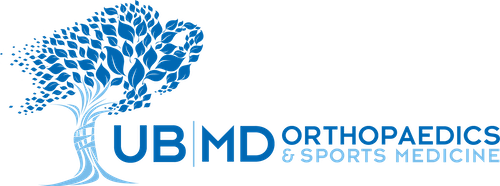Article courtesy of the University at Buffalo
Research that shows activity aids recovery for concussion patients has been adopted by experts in the field.
Guidelines Include Research by Leddy, Willer
New guidelines published this month in the British Journal of Sports Medicine are intended to guide clinical practice, as well as future research in the field of sport-related concussion.
The guidelines include research by John J. Leddy, MD, clinical professor of orthopaedics, and Barry S. Willer, PhD, professor of psychiatry.
Monitored Activity Recommended
The 2017 Concussion in Sport Group drafted new guidelines on how to best treat concussion for individuals ages 6 and older. For the first time, the recommendation for prolonged complete rest post-concussion was updated.
“We are not saying, after a concussion, go crazy and resume life as if nothing happened,” says Leddy, an adjunct professor of rehabilitation science. “What we are saying is that after two days of complete rest, if your symptoms have stabilized and you are starting to feel better, then it is OK to start to gradually do life activities and get your heart rate up a little. Don’t just sit in a bed with the lights off.”
Guidelines Revised Based on Research
Guidelines are released every four years to reflect updates that have taken place in the field of concussion research, he says. The biggest change from 2012 to 2016, Leddy says, was the replacement of the recommendation for complete rest beyond the first few days after concussion with guided and controlled activity.
The old guidelines indicated that individuals should not return to activity until they were asymptomatic. Until that time, the individual was told to do nothing.
“This was known as ‘cocoon therapy,’” Leddy says, “That was how the old guidelines were interpreted and patients were resting, literally being told to do nothing, until they were asymptomatic. The problem with that was even non-concussed people often have some symptoms on any given day.”
“The guidelines were good at keeping kids from participating at activities that risk another head injury before recovery, but were being interpreted to recommend that any level of exertion was detrimental to the brain. We now know that interpretation was wrong. All over the world, the treatment of complete rest was prolonging symptoms in many people.”
Standard for Practitioners
The document was developed by experts in the field of concussion for physicians and health care providers who are involved in athlete care — at a recreational, elite and professional level.
“This document has major implications in terms of concussion treatment,” says Leddy, medical director of the UBMD Concussion Management Clinic, who was part of the panel that formed the new guidelines. “It is the most cited document when it comes to treating concussion. These guidelines are meant to inform practitioners what the latest evidence says and to give advice about how to handle concussion.”
Used by Professional Sports Teams
Leddy says these guidelines have influence all over the world.
The advice offered through the guidelines, he says, is often followed by professional sports teams, college athletic departments, high schools, physical therapists, athletic trainers, sports physicians, primary care doctors and pediatricians.
Pioneering Work Led to $2 Million Grant
Leddy and Willer pioneered the use of low-level exercise to help athletes recover from sport-related concussion. In 2016 they were awarded a five-year, $2 million grant by the National Institutes of Health to study how the brain changes following a concussion and how that information may be used to predict recovery time.
